Temporally Coherent Sculpture of Composite Objects
Today I’ve read the paper “Temporally Coherent Sculpture of Composite Objects” by Sampaio , Artur P.; Chaine , Raphaëlle; A.Vidal, Creto; Cavalcante-Neto, Joaquim B.
Interactive virtual sculpting of composite shapes
This work propose the method of deforming an agglomeration of component elements (named CompEls) in real time as below.
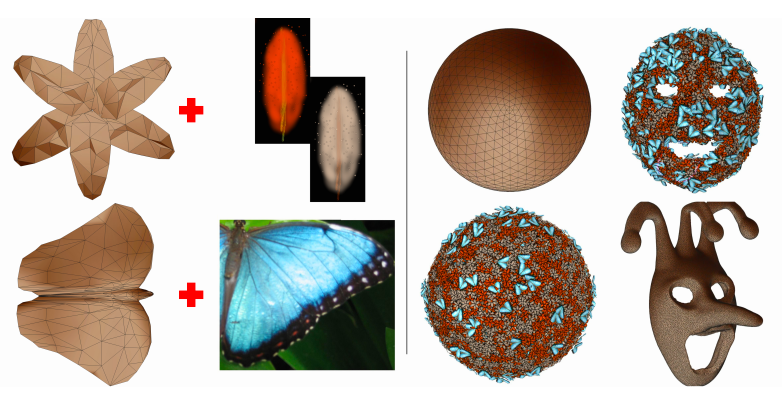
There are some exiting techniques to represent a surface composed small 3D objects, for example, stipples and texture bombing. However, they are time consuming and not intended to be used in real time.
Novelty of the study
Realtime sculpting and visualize CompEls using techniques below.
Empirical description by uniform meshes
Because the physically accurate interaction of components is too complex to compute in realtime, this method uses empirical description. The system focus on the outer layers of the shape represented as the quasi-uniform meshes. The system detect that the surface expand by the emergence of new sampling anchors.
quasi-uniform meshes is defined by threshold d and t below.
d: the maximum distance between two sampling point
t: the minimum distance below which the edge collapse
Check “Freestyle: Sculpting meshed with self-adaptive topology” for details.
CompEls are placed according to samples on the triangle of the mesh. Each one has 3parameters, the barycentric coordinate, depth level and orientation relative to the triangle.
Temporal coherence and continuity by controlling depth level
In this work, visual continuity is maintained. CompEls newly added are generated in deep layers and then appear to the surface from inside. And extra CompEls are first pushed toward the deeper layer before disappearing.
CompEl movement accompanying edge modification
Edge split
If the length of edge become longer than threshold d, the edge will be split. the barycenters of CompEls don’t move but be assigned new face.
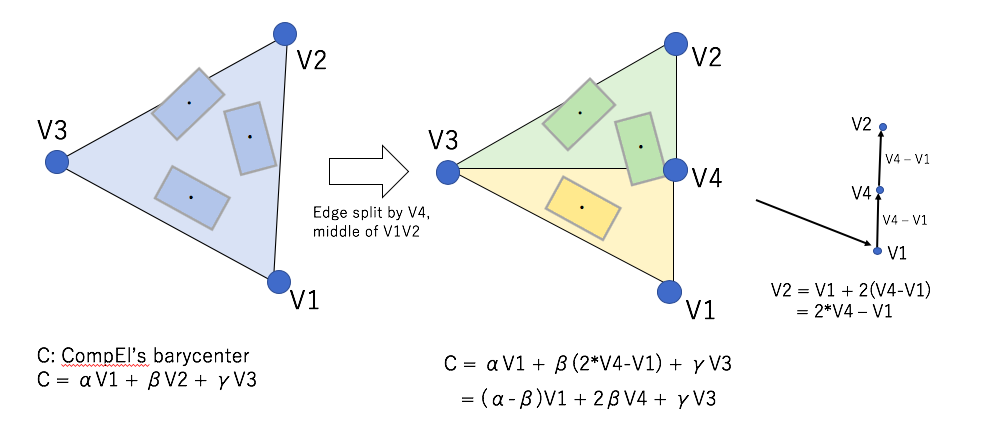
Edge collapse
If the length of edge become shorter than threshold t, the edge will collapse and all faces involved are reshaped. And each barycenters of CompEls are projected new faces.
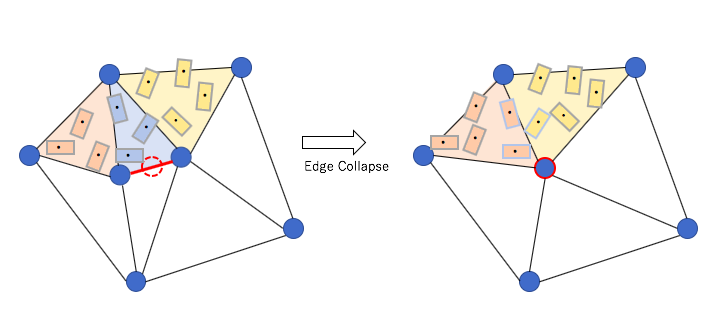
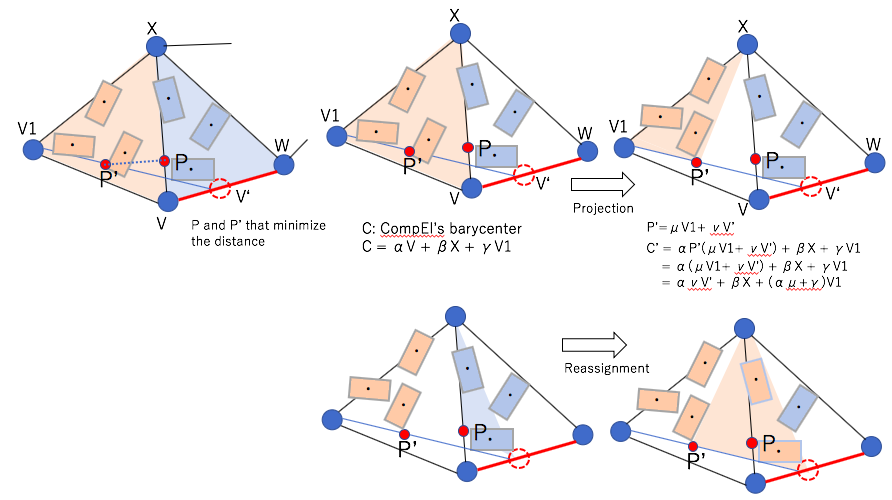
change of the ComEl’s barycenter in Edge collapse
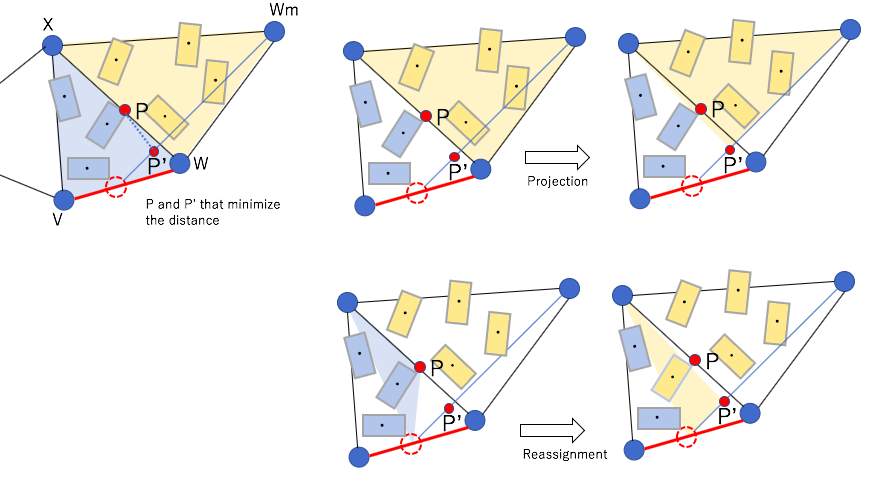
Edge flip
Edge flip is one of the ways of maintaining the distance of vertices without splitting or deleting edges.
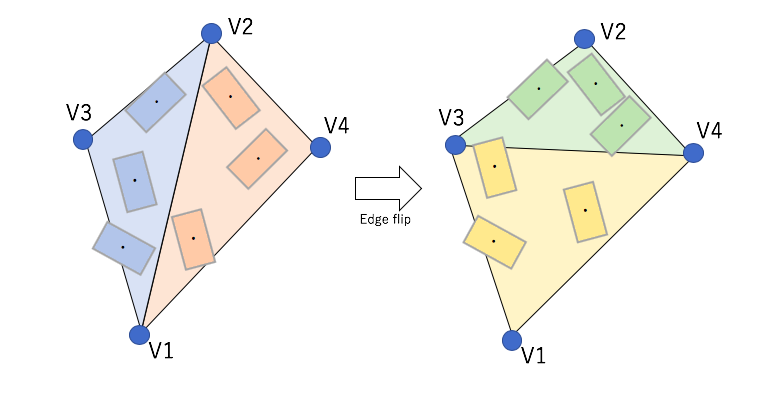
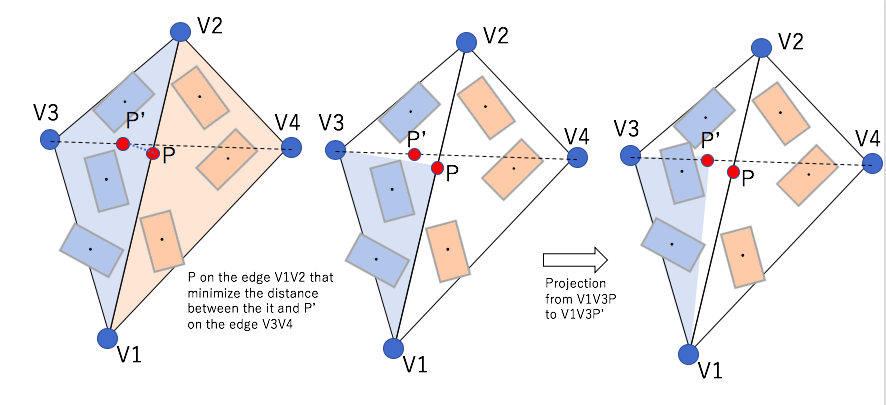
Change in topological genus
Change in topological genus is to reconnect vertices to maintain distance of correctly without moving the coordinates of them.
Techniques in rendering
Variability
CompEls are displayed using instance based modeling. Visual variability of each instance is acquired by using different texture and using low frequency noise.
Back CompEl Culling
If there is no back face culling function in graphic card, the system replaces CompEls on back face to the out of the view by comparing the eye direction to the normal vector of the quasi-uniform mesh which is closest to the CompEl’s barycenter.
CompEl squish
CompEl squish is the way of visual intersection prevention. By squeezing CompLes at a constant scale in the direction perpendicular to the canvas, CompEls are prevented to overlap in appearance.
Result
Please refer to the original paper to see some resulting images.